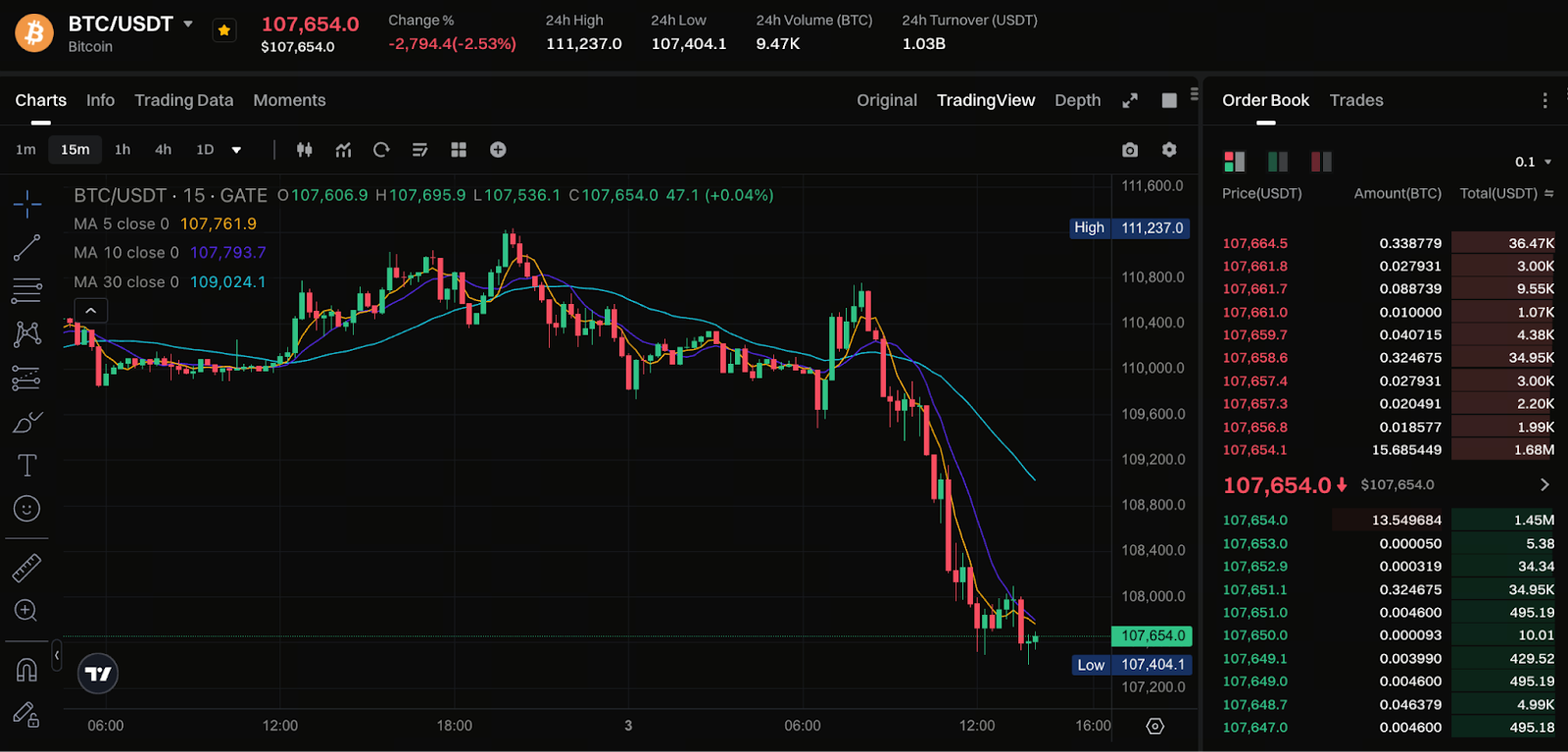If BTC drops below the $100,000 support level, could this lead to a sell-off?

Image: https://www.gate.com/trade/BTC_USDT
Bitcoin has experienced significant price fluctuations recently and is now approaching the critical psychological threshold of $100,000. For newcomers, it’s especially important to understand why this level matters, the potential implications if support fails, and effective strategies for responding.
Where is the key support?
At present, Bitcoin is trading around $110,000, with recent signs of downward pressure. Market analysis shows strong buying interest between $109,000 and $108,000. The $100,000 level is considered an even stronger and more psychologically significant support point—if the price breaks through this threshold, it could shift overall market sentiment.
Why is $100,000 so important?
- Psychological barrier: The $100,000 mark carries substantial psychological weight for investors, and holding above it can reinforce market confidence.
- Technical support: Analysts highlight the $109,000 support area, but if the decline persists, the next major support is near $100,000.
- Capital flows and sentiment shifts: Dropping below a key support level can trigger automatic sell orders, stop-losses, or a shift toward caution, intensifying downward momentum. Recently, Bitcoin’s volatility has increased due to macroeconomic and regulatory uncertainty.
What happens if support fails?
If Bitcoin falls below $100,000, the following scenarios may unfold:
- Accelerated sell-off: Automatic stop-loss triggers, unwinding of arbitrage positions, and panic selling could drive a short-term price drop.
- Market sentiment turns cautious: Failure to maintain expected support can erode bullish confidence.
- Technical weakness: Losing support may shift the next support lower, increasing downside risk.
While Bitcoin has not yet dropped to $100,000, a breach of nearby support could lead to further declines. Support does not always collapse; prices may rebound after testing support levels. Currently, Bitcoin remains in a tight trading range between $109,000 and $112,000, with potential for either a breakout or a sharp decline.
How should beginners respond?
If you are new to the market or preparing to enter, consider the following strategies:
- Set stop-loss and Take-Profit levels: If you hold Bitcoin, establish loss limits in advance (such as a break below $100,000 or another key level) to mitigate risk.
- Build positions incrementally: Avoid committing all funds at once—enter or exit in stages and monitor price action at key levels.
- Track capital flows and sentiment: Monitor holdings on major platforms, whale activity, and inflow data for early signals of price movement.
- Keep some cash on hand to take advantage of rebounds following downturns.
- Continue learning and avoid panic selling: A breakdown of key support does not indicate the end of the long-term trend; it may signal a period of price consolidation or adjustment. Beginners should exercise caution to avoid emotional trading.
In summary, if Bitcoin maintains support at $100,000, a rebound could follow; if support is breached, short-term selling pressure may rise. For newcomers, understanding this support area, maintaining composure, and developing sound strategies are crucial.
Related Articles

Pi Coin Transaction Guide: How to Transfer to Gate.io

Flare Crypto Explained: What Is Flare Network and Why It Matters in 2025

What is N2: An AI-Driven Layer 2 Solution

How to Use a Crypto Whale Tracker: Top Tool Recommendation for 2025 to Follow Whale Moves

Understand Baby doge coin in one article
